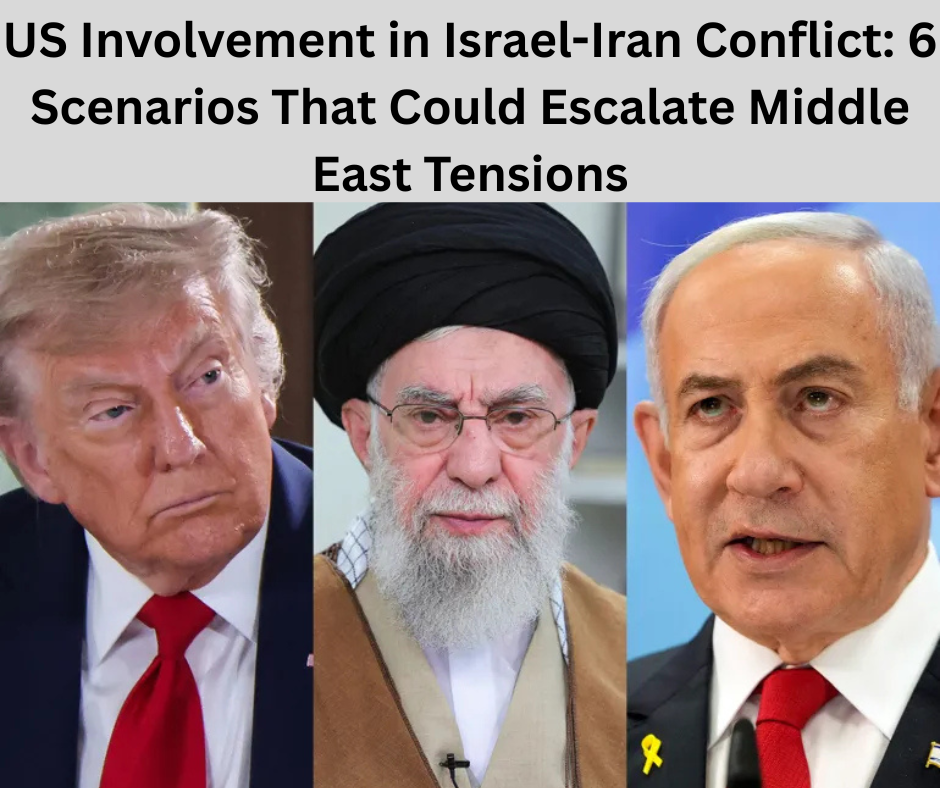US Involvement in Israel-Iran Conflict: Six Scenarios and Strategic Implications
US Involvement in Israel-Iran Conflict Raises Global Stakes
The US involvement in Israel-Iran conflict has drastically shifted the dynamics in the Middle East, following a decisive strike by the United States on three Iranian nuclear facilities. With President Trump labeling the operation as “very successful” and warning Iran of severe repercussions, this escalation has global ramifications. Here’s a detailed look at six key scenarios likely to emerge from this unfolding crisis.
1. Iranian Retaliation Against US Interests in the Region
The most immediate risk posed by US involvement in Israel-Iran conflict is Iranian retaliation targeting American bases in the Middle East. With military installations in Qatar, Bahrain, the UAE, and Saudi Arabia, the US is vulnerable to Iran’s arsenal of thousands of short- and medium-range missiles. Iran could also activate its network of proxies to launch asymmetric attacks, increasing the likelihood of an extended military confrontation.
2. Israel Targets Iran’s Core Military Infrastructure
Israel’s response to the growing tensions has included a nationwide alert and possible preemptive strikes. The primary target? Iran’s powerful Islamic Revolutionary Guard Corps (IRGC). If Israel initiates strikes on IRGC infrastructure, the conflict may escalate further, destabilizing not just Iran but the broader region. This could be seen as a direct result of the US involvement in Israel-Iran conflict, fueling a new arms race in the region.
3. Regional Proxy Activation and Multi-Front Warfare
One of the most dangerous outcomes of US involvement in Israel-Iran conflict could be the activation of Iranian proxies across the region. Groups like Hezbollah in Lebanon, the Houthis in Yemen, and various Shiite militias in Iraq and Syria may launch coordinated attacks on US and Israeli interests. This multi-front war scenario could devastate infrastructure, displace millions, and prolong instability across the Middle East.
4. Global Diplomatic Maneuvering and Superpower Involvement
China and Russia are expected to play a significant role as tensions escalate. Both nations have voiced criticism of US involvement in Israel-Iran conflict, with China accusing Washington of intensifying the situation and Russia warning of a “Chernobyl-style” disaster following attacks on nuclear facilities. Their diplomatic and possibly covert support for Iran could complicate de-escalation efforts, potentially leading to a proxy cold war in the Middle East.
5. Global Economic Shockwaves and Oil Supply Disruptions
Iran’s potential closure of the Strait of Hormuz—a critical artery for global oil transportation—could trigger economic instability worldwide. The US involvement in Israel-Iran conflict has already pushed oil prices up, with markets reacting to fears of supply disruption. If shipping lanes are blocked or damaged, inflation could spike globally, affecting everything from transportation costs to basic goods.
6. Room for Diplomatic Compromise Amid Mounting Pressure
While the situation seems dire, there is still a window for diplomacy. Iran has previously signaled a willingness to negotiate if hostilities cease. However, Israel’s leadership remains wary of diplomacy, particularly regarding Iran’s nuclear ambitions. If Iran feels that continued resistance threatens regime survival, it may consider returning to negotiations. Historical parallels, such as Iran’s eventual acceptance of a ceasefire during the Iran-Iraq War, suggest that a diplomatic solution is still plausible—though not without significant hurdles.
Strategic Implications Beyond Military Action
The US involvement in Israel-Iran conflict brings to light critical questions about long-term strategy. While targeted strikes can neutralize immediate threats, they do little to address underlying tensions. This has raised concerns among international observers about whether there is a broader vision beyond tactical victories. Without a clear post-conflict roadmap, the region risks descending into prolonged instability, much like post-invasion Iraq.
Israel’s strategy, despite its military precision, lacks clarity on the political endgame. Analysts warn that if Iran’s government collapses without a viable replacement, chaos could engulf one of the Middle East’s most influential nations. The “Pottery Barn Rule”—you break it, you own it—remains as relevant as ever.
Conclusion: A Region on the Brink
The US involvement in Israel-Iran conflict has set in motion a chain of events with the potential to redefine Middle East geopolitics. From regional wars and global economic shocks to possible diplomatic breakthroughs, the path forward is uncertain. What remains clear is the need for strategic foresight, international cooperation, and an urgent push for de-escalation to prevent further bloodshed.
In the coming weeks, the world will watch as diplomacy, military might, and geopolitical interests collide in one of the most volatile regions on Earth. The consequences of this conflict will not be confined to the Middle East—they will ripple across the globe.
Read more: Houthis Support for Iran

[…] BSNL 5G SIM-Free Plans Launched: Affordable Rates Challenge Airtel and Vi’s Market Hold US Involvement in Israel-Iran Conflict: 6 Scenarios That Could Escalate Middle East Tensions UGC NET Exam City Slip 2025 Released: Download June 26 & 27 Test Details at ugcnet.nta.ac.in […]